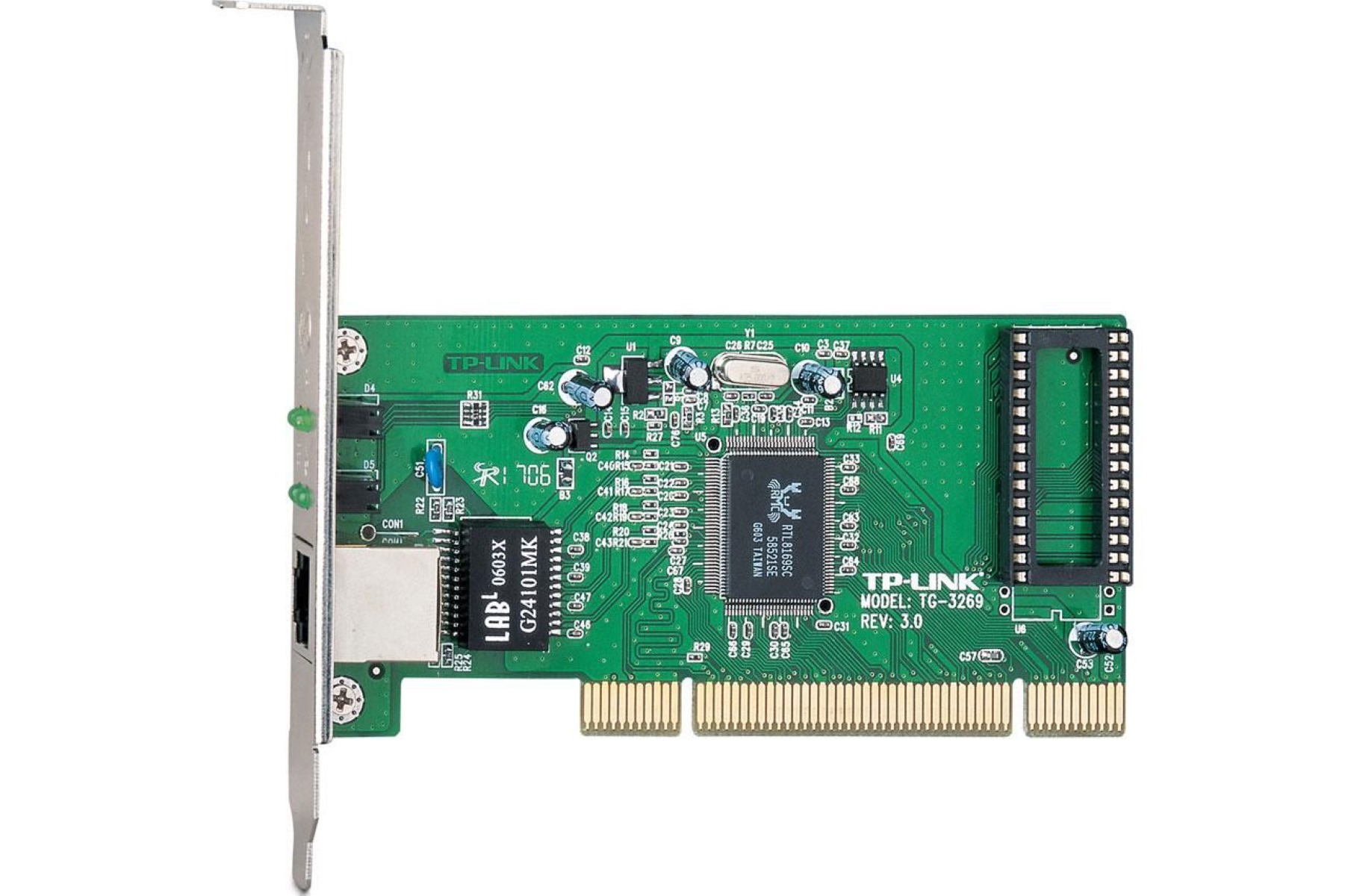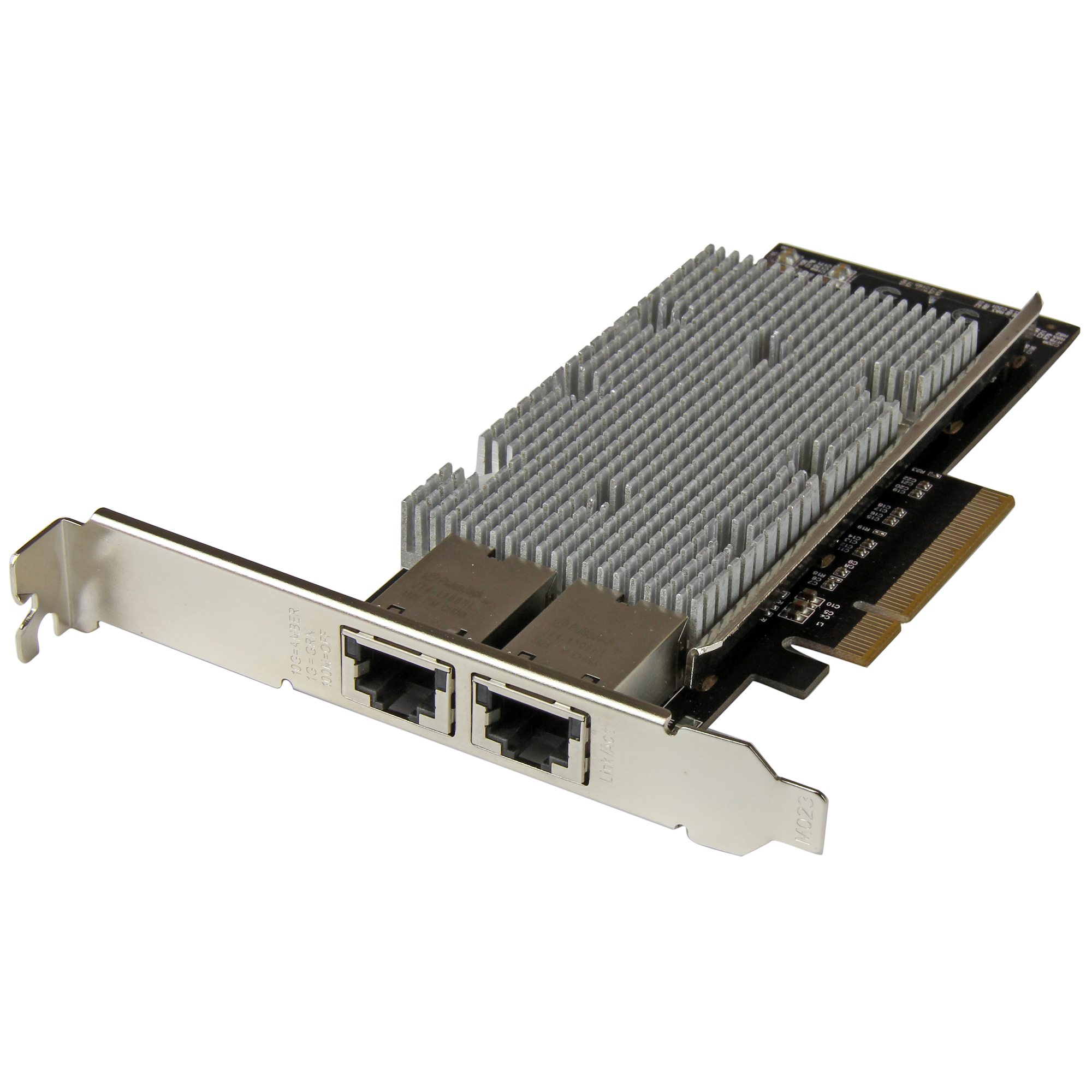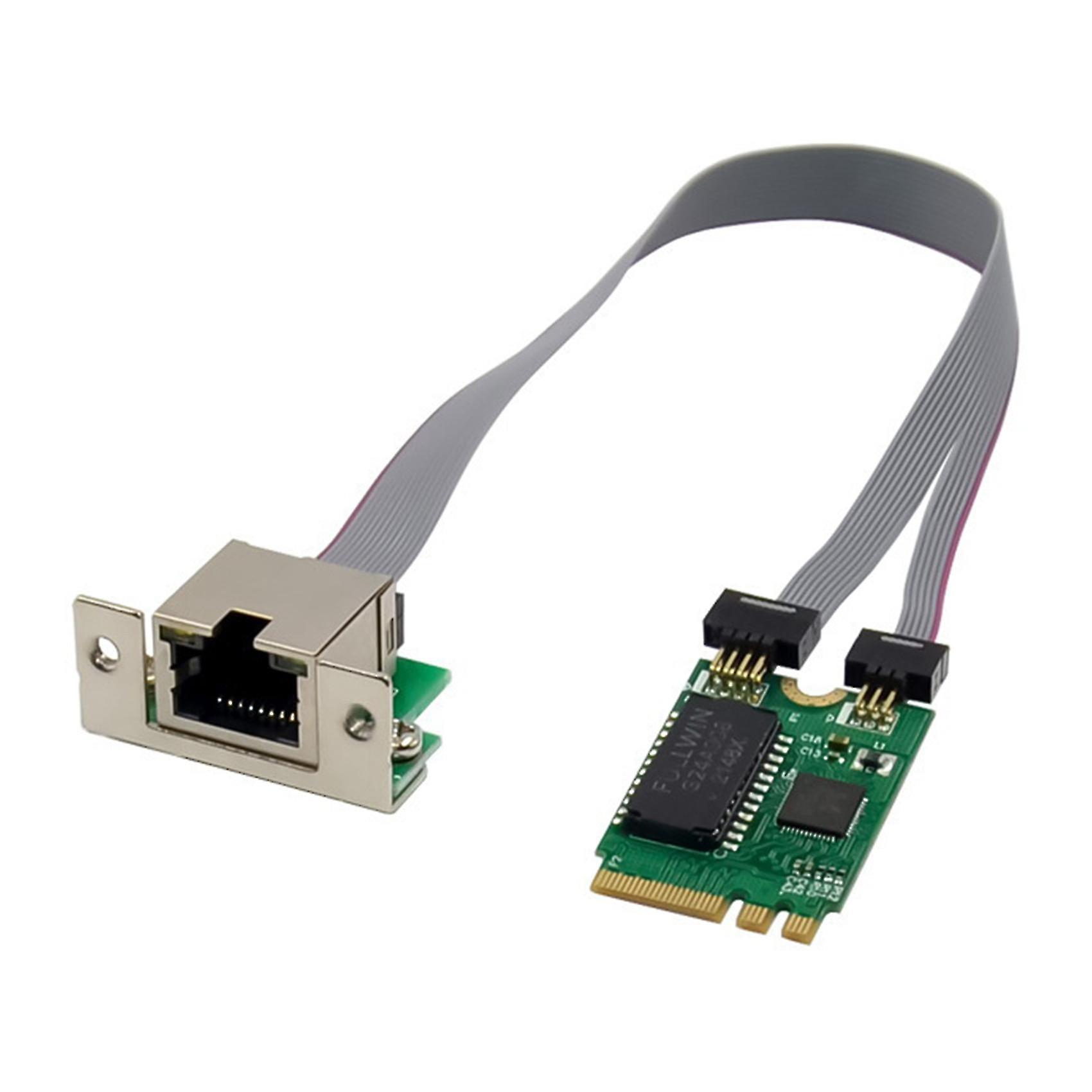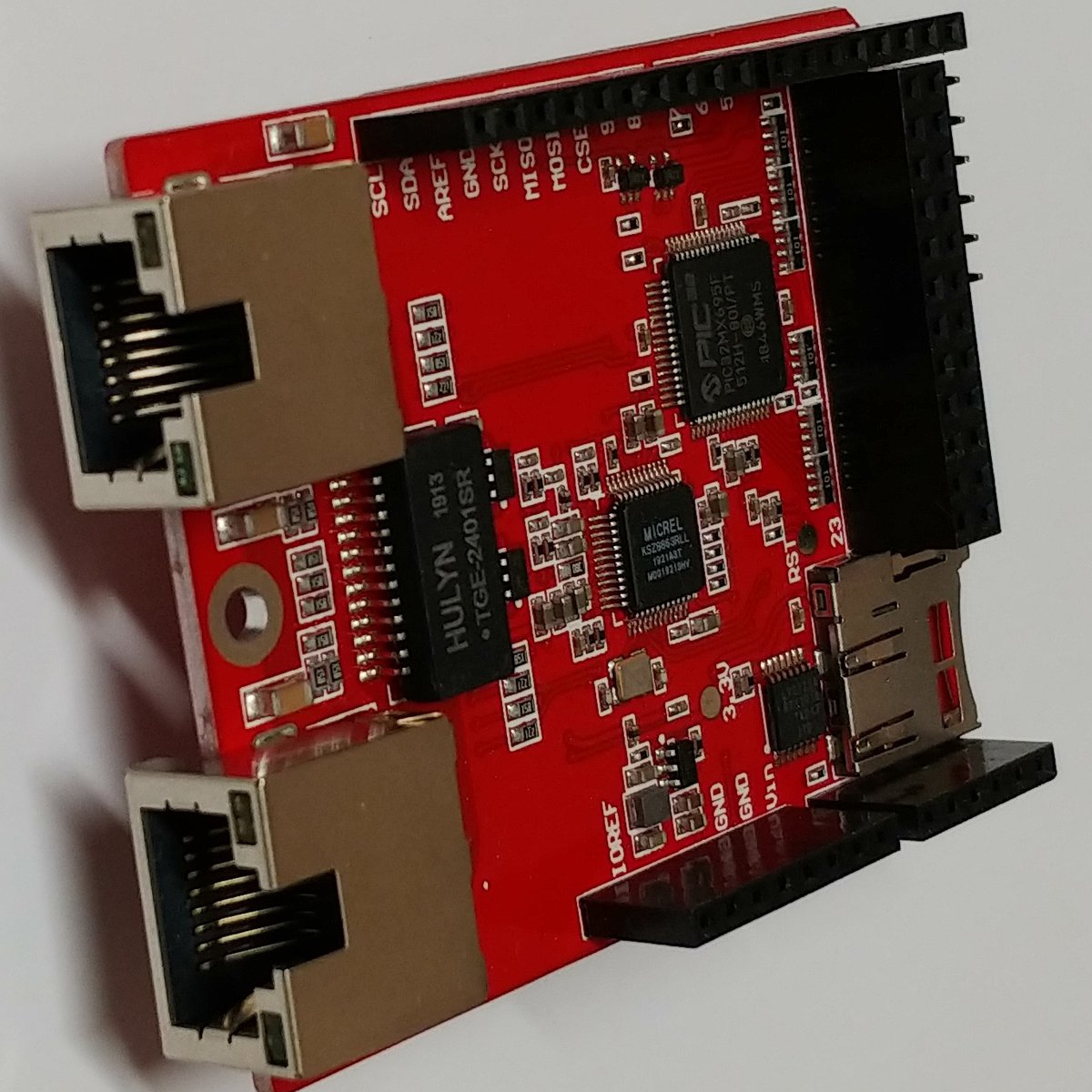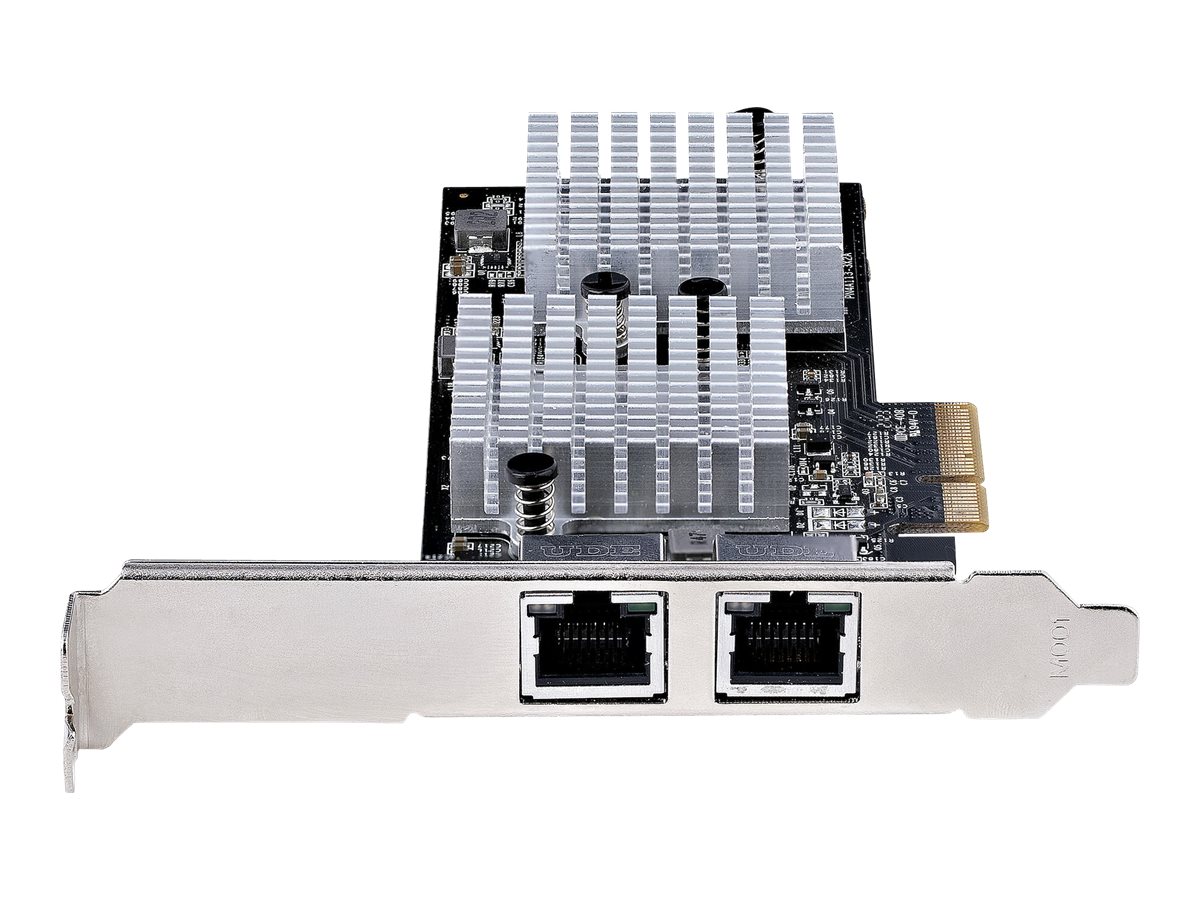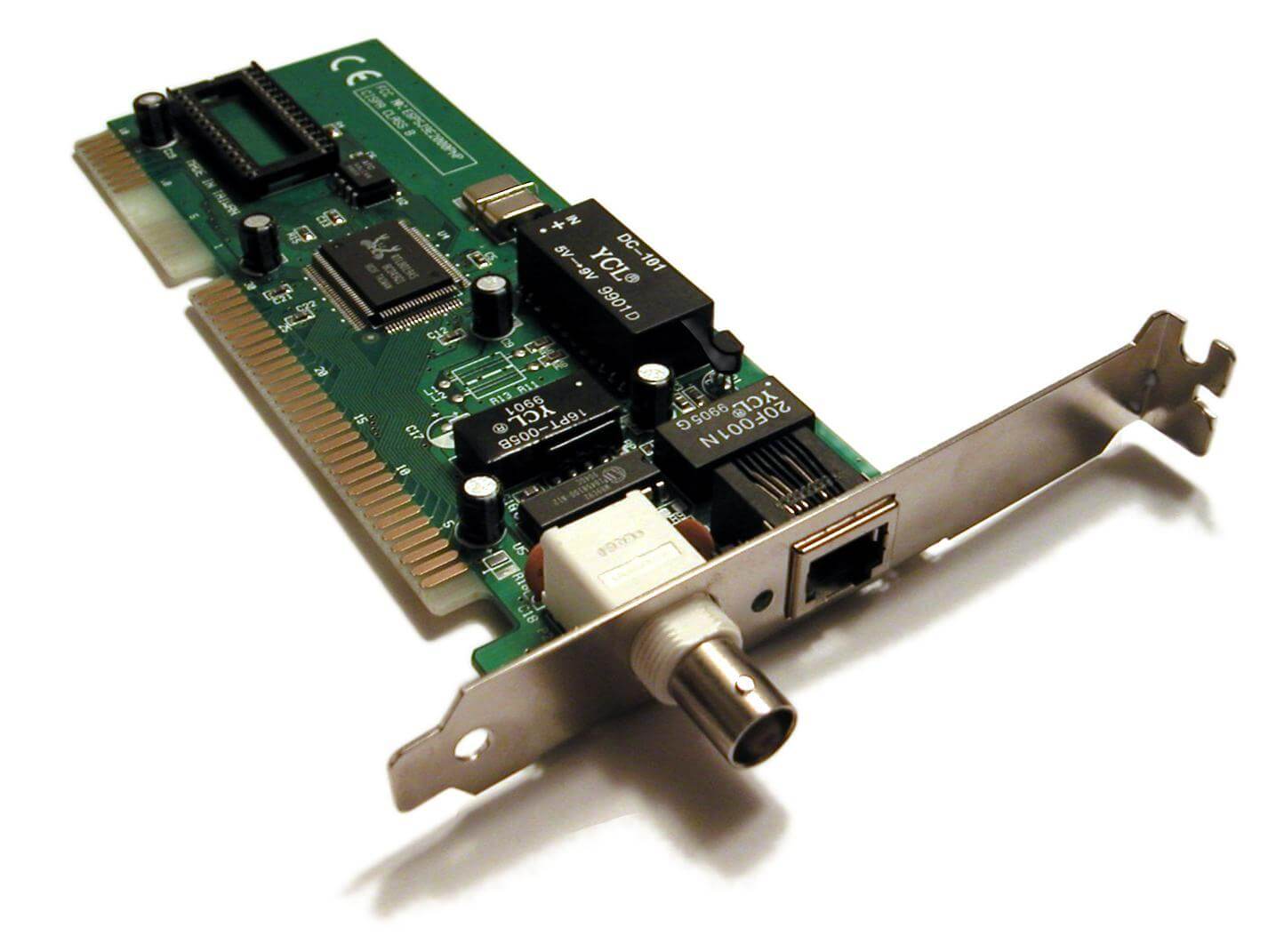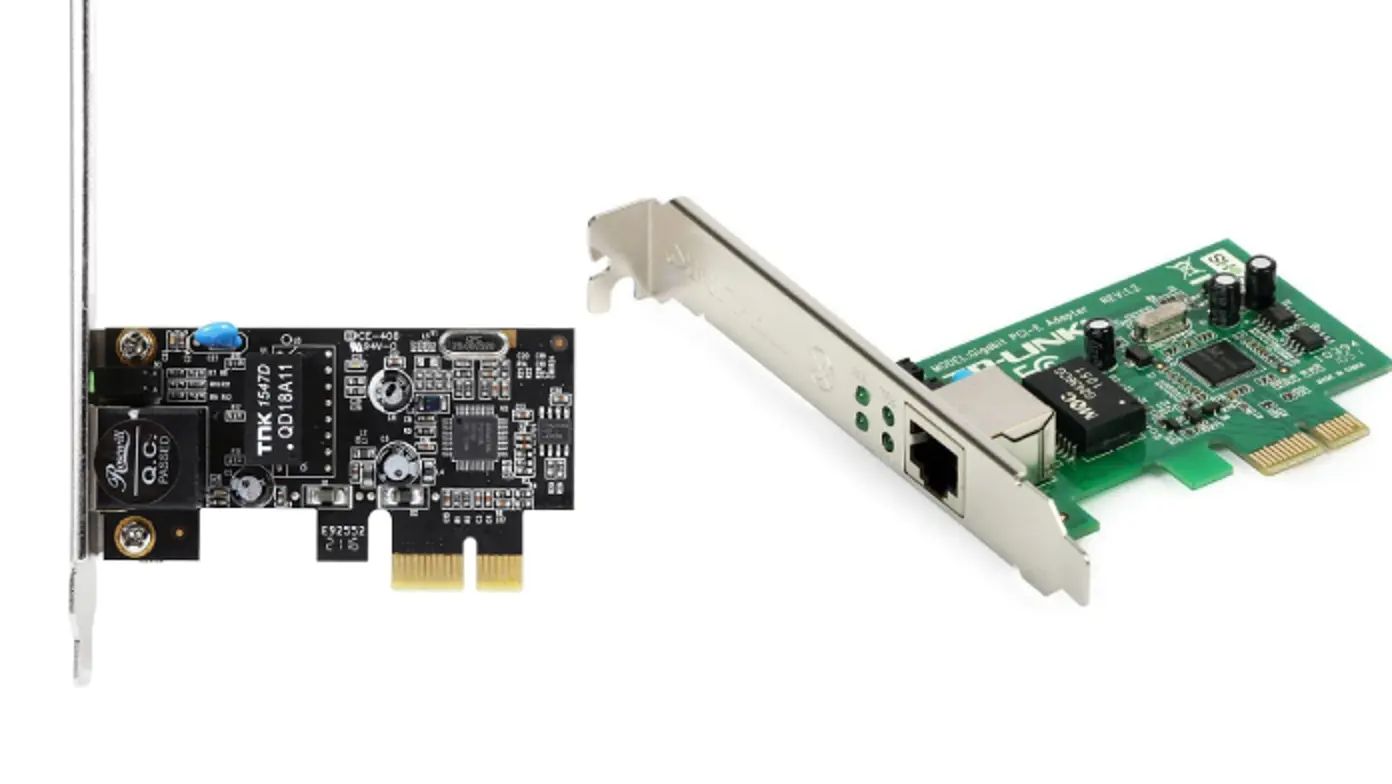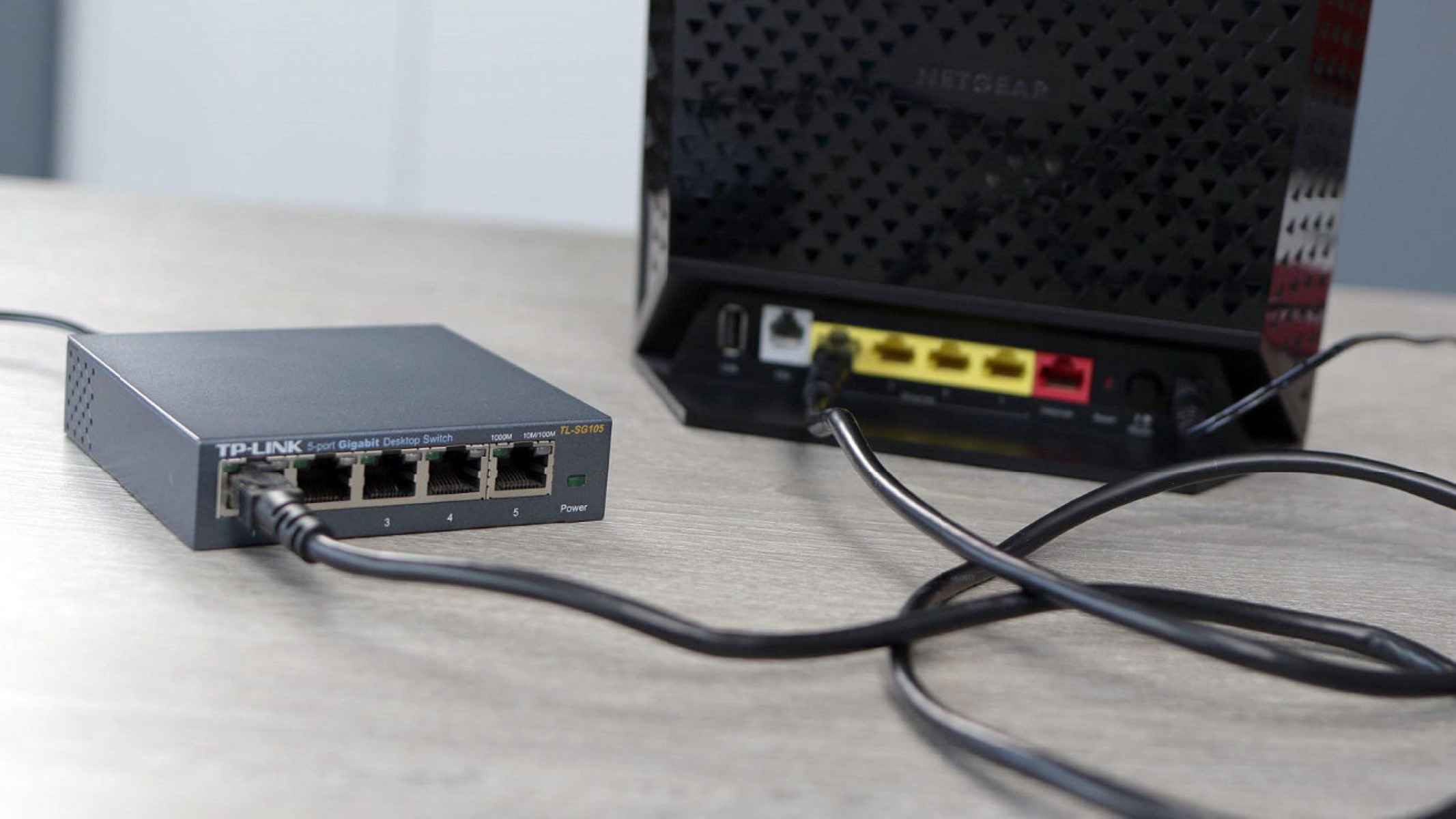Introduction
Welcome to the world of Ethernet cards! In today’s interconnected world, where data and information flow at high speeds, Ethernet cards play a vital role in connecting devices and facilitating seamless communication. Whether you are a tech enthusiast, a computer network professional, or someone curious about the inner workings of your computer, understanding Ethernet cards is essential.
An Ethernet card, also known as a network interface card (NIC) or network adapter, is a hardware component that enables a computer or device to connect to a local area network (LAN) or the internet. It serves as the bridge between your computer and the network, allowing data to be transmitted and received across the network.
Imagine Ethernet cards as the gatekeepers of your computer’s network connection. They control the flow of data, allowing it to pass between your computer and other devices on the network. Without an Ethernet card, your computer would be isolated, unable to communicate with other devices or access online resources.
So how does an Ethernet card actually work? Well, let’s dive into the details in the next section!
What is an Ethernet Card?
An Ethernet card, also known as a network interface card (NIC) or network adapter, is a hardware component that enables a computer or device to connect to a local area network (LAN) or the internet. It serves as the bridge between your computer and the network, allowing data to be transmitted and received across the network.
At its core, an Ethernet card facilitates the transfer of data packets between your computer and other devices connected to the network. These data packets contain the information you send and receive, such as emails, web pages, videos, and more.
Ethernet cards operate using the Ethernet protocol, a set of rules and standards that govern the communication between devices on the network. The most common Ethernet protocol is known as IEEE 802.3, which defines the specifications for data transmission and network access.
Typically, an Ethernet card is a small expansion card that is installed inside your computer’s motherboard or connected externally through a USB or Thunderbolt port. Once installed, it becomes an essential part of your computer’s networking capabilities.
Modern Ethernet cards are designed to support various Ethernet speeds, ranging from 10 Mbps (megabits per second) to 1000 Mbps or higher, depending on the card’s specifications. Higher speeds allow for faster and more efficient data transfer, making them ideal for handling large file transfers, streaming media, and online gaming.
What makes Ethernet cards even more versatile is their compatibility with different network types. Whether you’re connecting your computer to a wired Ethernet network using Ethernet cables or accessing a wireless network through a Wi-Fi router, your Ethernet card can handle both scenarios.
Furthermore, Ethernet cards can support multiple network protocols, allowing you to connect to different types of networks, such as local area networks (LANs), wide area networks (WANs), and the internet.
In the next section, we’ll explore how an Ethernet card works and the various components that make it all possible.
How Does an Ethernet Card Work?
An Ethernet card works by managing the transmission and reception of data packets between your computer and the network. To understand how it functions, let’s break it down into four key components: the physical interface, data encapsulation, media access control, and network drivers.
1. Physical Interface: The physical interface of an Ethernet card consists of the port or connector that allows you to connect an Ethernet cable. This connector could be an RJ-45 port, commonly used for wired Ethernet connections, or a wireless antenna for Wi-Fi connections. The physical interface ensures a proper and secure connection to the network.
2. Data Encapsulation: Before data can be transmitted, it needs to be encapsulated into data packets. The Ethernet card takes the data, breaks it into smaller packets, and adds additional information, such as the source and destination addresses. This encapsulation ensures that the data can be properly routed through the network.
3. Media Access Control (MAC): The MAC layer is responsible for controlling the access to the network media, such as Ethernet cables or wireless channels. The Ethernet card uses MAC protocols to determine when it can send or receive data. It helps prevent conflicts and ensures that data is transmitted smoothly across the network.
4. Network Drivers: To enable communication between the Ethernet card and your computer’s operating system, specific software called network drivers are required. These drivers act as intermediaries, translating the commands and data between the card and the operating system. Network drivers also provide additional functionalities and settings for configuring the card’s behavior.
When you send data from your computer, the Ethernet card takes the data packets, adds the necessary information, and transmits them onto the network. Similarly, when data is received from the network, the card captures the packets, checks the destination address, and delivers the data to your computer for processing.
Through this process, an Ethernet card enables seamless communication between your computer and the network, allowing you to access the internet, share files, stream media, and much more.
In the next section, we’ll explore the different types of Ethernet cards available in the market and their unique features.
Types of Ethernet Cards
Ethernet cards come in various types to cater to different networking needs and technologies. Let’s explore some of the common types of Ethernet cards:
1. PCI Ethernet Cards: PCI (Peripheral Component Interconnect) Ethernet cards are designed to be installed directly onto the PCI slots of the computer’s motherboard. They offer reliable connectivity and are widely used in desktop computers and servers. The PCI form factor allows for faster data transfer rates and supports various Ethernet speeds.
2. PCIe Ethernet Cards: PCIe (Peripheral Component Interconnect Express) Ethernet cards are the successor to PCI cards and offer even faster data transfer rates. They are commonly found in modern computers and servers that have PCIe slots. PCIe cards provide improved performance and are backward compatible with older PCI slots.
3. USB Ethernet Adapters: USB Ethernet adapters are external devices that connect to your computer’s USB port. They are convenient for laptops and devices that lack built-in Ethernet ports. USB adapters are often used to add Ethernet connectivity to devices like gaming consoles, smart TVs, or older computers. They offer flexibility and can support various Ethernet speeds.
4. Wireless Ethernet Cards: Wireless Ethernet cards, also known as Wi-Fi adapters or wireless network cards, enable wireless connectivity to networks. These cards utilize radio waves to establish a connection with a wireless router or access point, allowing devices to connect to Wi-Fi networks. They are commonly used in laptops, tablets, and smartphones.
5. Fiber Optic Ethernet Cards: Fiber optic Ethernet cards are designed to work with fiber optic cables, which transmit data using light signals. These cards are used in high-speed networks that require long-distance transmission and high bandwidth. Fiber optic Ethernet cards are often employed in enterprise networks, data centers, and telecommunications infrastructure.
6. Integrated Ethernet Cards: Integrated Ethernet cards, also known as onboard Ethernet, are built into the motherboard of a computer. They offer a cost-effective and space-saving solution since they do not require an additional expansion card. Integrated Ethernet cards are commonly found in laptops, all-in-one computers, and small form factor desktops.
Each type of Ethernet card has its own advantages and is suitable for specific scenarios. When choosing an Ethernet card, consider factors like compatibility with your computer, required data transfer speeds, and the desired network connection (wired or wireless).
Now that we’ve explored the types of Ethernet cards available, let’s move on to the next section, where we’ll provide a guide on installing an Ethernet card.
Ethernet Card Installation Guide
Installing an Ethernet card is a relatively straightforward process, whether you’re adding a new card to your computer or replacing an existing one. Here’s a step-by-step guide to help you through the installation:
1. Choose the Right Ethernet Card: Before installing an Ethernet card, ensure that it is compatible with your computer’s hardware and operating system. Check for any specific requirements or recommendations from the manufacturer.
2. Shut Down Your Computer: Turn off your computer and unplug it from the power source. This will prevent any accidental damage during the installation process.
3. Open Your Computer’s Case: Depending on your computer model, you may need to remove screws or slide a panel to access the internal components. Follow the manufacturer’s instructions or consult your computer’s user manual.
4. Locate an Available Expansion Slot: Look for an available PCI or PCIe slot on your computer’s motherboard. These slots are typically white or black and can be found near the back of the computer.
5. Insert the Ethernet Card: Carefully align the Ethernet card’s connector with the corresponding slot on the motherboard. Gently push the card into the slot until it is firmly seated. Make sure not to apply excessive force.
6. Secure the Card: Once the card is inserted, use a screw or latch to secure it in place. This will prevent the card from moving or becoming loose during operation.
7. Reassemble Your Computer: Put the computer’s case back on and fasten any screws or clips that were removed. Ensure that the case is properly closed and aligned.
8. Connect the Ethernet Cable: Take an Ethernet cable and connect one end to the Ethernet port on the card. The other end of the cable should be connected to the network device, such as a modem, router, or switch.
9. Power On and Install Drivers: Plug your computer back into the power source and turn it on. Once the operating system is loaded, it may automatically detect the new Ethernet card. If not, insert the installation CD or download the latest drivers from the manufacturer’s website and follow the instructions to install them.
10. Configure Network Settings: After installing the drivers, you can configure the network settings for your Ethernet card. This may include setting the IP address, subnet mask, and gateway information. Consult your operating system’s network settings or network configuration utilities for further instructions.
With the Ethernet card installed and configured, your computer is now ready to connect to the network and enjoy fast and reliable data transfer.
In the next section, we’ll discuss some common troubleshooting techniques for Ethernet card issues.
Troubleshooting Ethernet Card Issues
Despite their reliability, Ethernet cards can sometimes encounter issues that disrupt network connectivity. Here are some common troubleshooting techniques to help you resolve Ethernet card problems:
1. Check Physical Connections: Ensure that the Ethernet cable is securely connected to both the Ethernet card and the network device. Verify that the cable is not damaged or frayed, and try using a different cable to eliminate the possibility of a faulty connection.
2. Restart Network Devices: Power cycle your modem, router, or switch by unplugging them from the power source, waiting for a few moments, and then plugging them back in. This can help refresh the network connection and resolve temporary issues.
3. Update Ethernet Card Drivers: Outdated or incompatible drivers can cause connectivity problems. Visit the manufacturer’s website to download and install the latest drivers for your Ethernet card. This ensures compatibility with your operating system and resolves any known issues.
4. Reset Network Settings: Resetting network settings on your computer can sometimes resolve configuration conflicts. Try resetting TCP/IP settings or using the network troubleshooting tools provided by your operating system.
5. Disable Security Software: Firewall or antivirus software can sometimes interfere with network connectivity. Temporarily disable these programs and check if the Ethernet card works without any issues. If so, adjust the settings of your security software to allow network access.
6. Check for IP Address Conflicts: Ensure that no other device on the network is using the same IP address as your computer. Duplicate IP addresses can cause network conflicts. Configure your Ethernet card to use a unique IP address or enable DHCP to automatically assign one for you.
7. Test with Different Ports: If you have multiple Ethernet ports on your computer or network device, try connecting the Ethernet cable to a different port. This helps identify whether the issue lies with the Ethernet card or a specific port.
8. Inspect Hardware: Visually inspect the Ethernet card for any physical damage or loose connections. Remove the Ethernet card from the expansion slot and reseat it firmly to ensure a proper connection.
9. Consult Manufacturer Support: If you have tried all the troubleshooting techniques and are still experiencing issues, reach out to the manufacturer’s support for further assistance. They can provide specialized guidance and help resolve any hardware or driver-related problems.
Remember to document any error messages or specific details about the issue you are experiencing. This will be helpful when seeking support or troubleshooting the problem further.
By using these troubleshooting techniques, you can overcome common Ethernet card issues and ensure smooth network connectivity.
In the final section, we’ll discuss the advantages and disadvantages of Ethernet cards to provide a comprehensive understanding of their benefits and limitations.
Advantages and Disadvantages of Ethernet Cards
Ethernet cards offer numerous benefits that make them a popular choice for network connectivity. However, they also come with a few limitations. Let’s explore the advantages and disadvantages of Ethernet cards:
Advantages:
- Reliable and Stable: Ethernet connections are known for their stability and reliability, making them ideal for tasks that require consistent and uninterrupted data transfer.
- High-Speed Connectivity: Ethernet cards support various speeds, allowing for fast data transfer and high-bandwidth applications such as HD video streaming, online gaming, and large file transfers.
- Wide Compatibility: Ethernet cards are compatible with a wide range of devices, including computers, servers, gaming consoles, smart TVs, and more.
- Secure Connections: Ethernet connections provide a secure and private network environment, making them suitable for confidential data transfer and sensitive tasks.
- Flexible Network Options: With Ethernet cards, you can choose between wired or wireless connections, enabling you to adapt to different network setups and environments.
- Scalability: Ethernet networks are highly scalable, allowing for the addition of more devices and expansion as your network needs grow.
Disadvantages:
- Physical Limitations: Ethernet cables have a limited physical reach, usually up to 100 meters for Cat5e or Cat6 cables. Beyond this distance, signal degradation can occur, requiring additional equipment like repeaters or fiber optic cables.
- Installation Complexity: Installing Ethernet cables and configuring network settings can be more complex than using wireless connections, especially in situations where running cables might be challenging.
- Dependence on Infrastructure: Ethernet connections rely on established network infrastructure, such as routers, switches, and cables. These components need to be properly maintained and upgraded to ensure optimal performance.
- Physical Space Requirement: Ethernet cables and network devices require physical space, which may be a limitation in certain environments where space is limited or aesthetically sensitive.
- Cost: While Ethernet cards themselves are relatively affordable, setting up and maintaining an Ethernet network, especially in large-scale deployments, can involve additional costs for equipment, cables, and network infrastructure.
Considering these advantages and disadvantages will help you make an informed decision when choosing and utilizing Ethernet cards for your network connections.
With this comprehensive understanding of Ethernet cards, including their functionality, installation process, troubleshooting techniques, and pros and cons, you are now equipped with the knowledge to effectively use and troubleshoot Ethernet cards.
Now, it’s time to put your knowledge into practice and explore the world of Ethernet networking!
Conclusion
Ethernet cards play a crucial role in connecting devices to local area networks and the internet, enabling seamless communication and data transfer. These network interface cards are available in various types, including PCI, PCIe, USB, wireless, and fiber optic, catering to different connectivity needs and technologies.
Understanding how an Ethernet card works, from its physical interface to data encapsulation and media access control, allows you to grasp the mechanics behind network connectivity. By following the installation guide, you can easily add or replace an Ethernet card in your computer, ensuring a reliable and fast connection.
In the event of any Ethernet card issues, troubleshooting techniques such as checking physical connections, updating drivers, and resetting network settings can help resolve common problems. Consulting manufacturer support can provide further aid in resolving hardware or driver-related issues.
Ethernet cards bring numerous advantages, including reliable and stable connections, high-speed data transfer, compatibility with various devices, secure connections, and scalability. However, they also come with limitations such as physical constraints, installation complexity, dependence on infrastructure, physical space requirements, and associated costs.
By weighing the advantages and disadvantages, you can make informed decisions regarding the use of Ethernet cards and determine if they suit your specific network requirements.
With the knowledge gained from this comprehensive guide, you are now equipped to navigate the world of Ethernet networking with confidence. So go ahead, explore, connect, and make the most of your Ethernet card!







